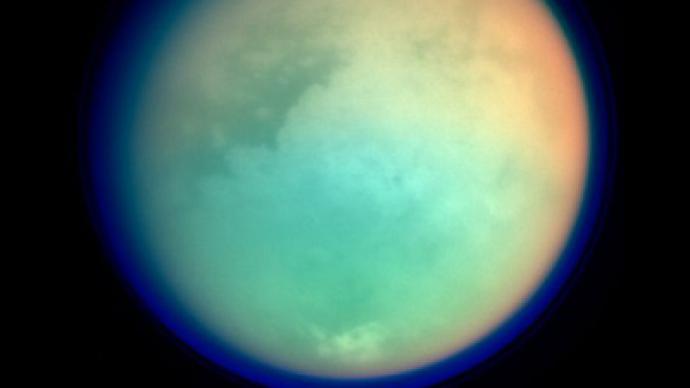Titan sensation: Saturn’s moon has watery ocean under thick ice crust

Titan, one of the most interesting objects in our Solar system, may have an ocean of water beneath its thick ice crust layer. Scientists say large deposits of water drastically increase the possibility of life on the moon.
Saturn’s largest moon Titan is one of the few objects in our system that can boast a true atmosphere. The moon also has developed a climate, with oceans and lakes of methane and ethane on its surface. The results of the measurements obtained by NASA’s Cassini spacecraft, which passed Titan six times between 2004-2011, made a group of scientists at Italy's Università La Sapienza in Rome believe that the moon possess not just liquid hydrocarbons, but water as well.“The presence of water does not imply life,” explained Luciano Iess. “But Titan has many interesting ingredients – hydrocarbons, a hydrological cycle and a thick atmosphere.”The Cassini spacecraft was launched in 1997 and reached Saturn in 2004. Cassini’s mission was expected to last until 2008, but since then it has been prolonged twice: first for 27 months, then till 2017.The orbit of Titan is elliptical so the gravitation it is exposed to is changing, squeezing and stretching the moon. These changes were registered by the Cassini–Huygens mission.Electrical field measurements and other data collected by the Huygens probe that landed on Titan on January 14, 2005 also contributed a lot to the mathematical modeling of Titan’s structure. Titan, which is about twice as big as our own Moon, turned out to be excessively deformed by the gravitational field of its primary Saturn. If it were made of stone and ice, the deformations would be less evident.Titan is in fact covered with a thick layer of ice that wouldn’t be deformed too much – unless there is a layer of a something softer underneath it. Scientists believe this layer consists of water with some salts dissolved in it.The ocean is believed to lie 100 kilometer below the think shell of ice covering the natural satellite. Determining, however, whether there actually is water on Titan will remain for quite a time, as there are currently no means to drill through 100 kilometers of moon ice. There are other planets in the Solar System that presumably have water deposits under layers of ice and where microbial life might be found. The most encouraging candidates are Jupiter's Europa, where another ocean is believed to exist under ice, and Enceladus, another Saturn moon, where geysers of methane have been registered.Two more NASA space missions, Titan Saturn System Mission and Europa Jupiter System Mission, are planned for the 2020s.The results of the latest Titan research have been published in The Science magazine.














